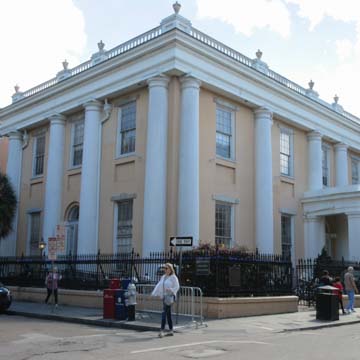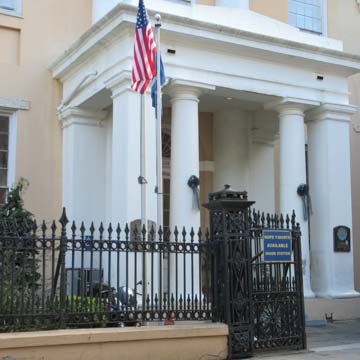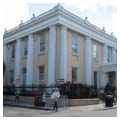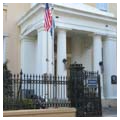After this massive rectangular two-story building of stucco-covered brick was damaged by fire in 1861, Gallier added a Tuscan entrance portico. He also gave the bank a more imposing appearance by replacing the Ionic capitals of the two-story engaged columns with weightier Tuscan capitals. A prominent cornice and balustrade adorned with urns on rectangular pedestals complete the ornamentation of the building. The fence and gates, based on Robert Adam’s gates to Lansdowne House, London, were produced by a New York company in 1827. After the bank’s assets were liquidated in 1867, the building served as the state capitol from 1869 to 1870, after which it housed an auction exchange, a concert hall, a saloon, a criminal court, and a tourist office.
You are here
New Orleans 8th District Police Station (Bank of Louisiana)
If SAH Archipedia has been useful to you, please consider supporting it.
SAH Archipedia tells the story of the United States through its buildings, landscapes, and cities. This freely available resource empowers the public with authoritative knowledge that deepens their understanding and appreciation of the built environment. But the Society of Architectural Historians, which created SAH Archipedia with University of Virginia Press, needs your support to maintain the high-caliber research, writing, photography, cartography, editing, design, and programming that make SAH Archipedia a trusted online resource available to all who value the history of place, heritage tourism, and learning.





